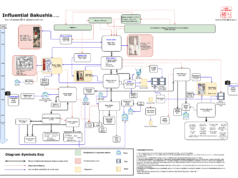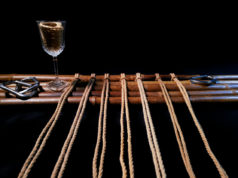Over the past few years the interest in Japanese erotic rope bondage has exploded. Whether you call it shibari or kinbaku or just Japanese rope, it is worth considering a few things before you head off to YouTube or How To videos and books to start playing with rope.
The immediate impulse is to want to learn how to tie. That means learning patterns. Steps. How do you make that harness you saw on Instagram or how do you create that cool looking basket weave leg tie that makes my partner look like a mermaid?
Before you do that, I want to encourage you to do a few other things first.
One of the most powerful and beautiful things about rope is that there are innumerable styles and approaches to tying your partner. But it is important to understand that each of those approaches are designed with a particular goal in mind. Some may be designed for semenawa (torment rope) while other may be more focused on vulnerability and exposure. Some ties are structured for suspensions, some aren’t. Different approaches or styles are designed to evoke different responses and have different techniques to achieve those responses.
What that means is that the first thing you need to think about is what do you and your partner want to get out of your rope experience?
How you tie depends entirely on what you want to get out of the experience. What is it that you enjoy about tying or being tied? Is it aesthetic, emotional, communication, pain play, D/s, erotic, about exposure, vulnerability, or surrender? Each of those approaches have a variety of approaches, techniques, schools, etc.
The most important thing you can do when you are starting is figure out what it is you want, like, and desire and make sure your partner is on the same page. Talk about it and figure out what appeals to you and then find someone with experience teaching that style of rope.
Even just starting out, you can have some very intense and very intimate rope scenes with a single length of rope and one or two basic ties. Rope and ties are nothing more than tools, which allow you to do other things. What kind of experience do you want to create for yourself and your partner? Figure that out first and the use your rope as a way to create that.
Once you both understand what feelings, emotions, sensations, and intensity you want to share, then it is time to starting thinking about which ties can produce those effects.
If rope is something you want to do with someone, rather than just to someone, it makes sense to start with the communication and experience, rather than with the technical aspect.
Once you find a tie that fits the experience you want to create, then you need to start thinking about how you tie it. Do you do it standing or sitting? Slow or fast? Do you pull your partner close to you or keep them at a distance? Do you whisper in their ear while you tie? What do you say? Do you want them happy, excited, turned on, objectified? Rope can help you create any of those things and much much more.
Once you have figured all those things out, find the tie you want to learn and spend time with your partner tying it every way you can imagine. Then talk about it. What did you like? What did they like? What felt good and what didn’t? What things produced the effects you were looking for? Did you discover anything new? Build a vocabulary so that the rope can start to produce a conversation every time you tie.
If you are just starting out, I would recommend an exercise. Tie your partner’s hands together in front of them. Do it over and over and see how many different feelings and emotions you can convey in that simple act. Get creative. Tie it loose, tie it tight. Slow. Fast. From in front. From behind. Think about every touch and every sensation. Watch your partner’s responses, their breathing, how they move, and what sounds they make.
Before you study the rope, study your partner. Learn how to read them and how to create experiences for them. Learn to communicate with your body, your hands, your body position, your timing, and your intention.
Nothing I am saying will get you any likes on Instagram or make your pictures Kinky & Popular on Fetlife, but what it will do is add a layer of communication, fun, and pleasure to your rope bondage time.
In shibari there is an important distinction between kokoro, the heart or spirit of something, and katachi, the technique. Understanding the feelings, emotions, and desires that you want to explore (the kokoro) is what animates and gives meaning to the technique.
Learning how to do ties and repeat patterns doesn’t make your rope “shibari” anymore than owning a typewriter makes you a novelist.
Once you learn how to do a new tie, all your work is still in front of you. You have to figure out how the tie relates to you and how it relates to your partner. Does it do the things you need it to do to express what you want to express? Does it create the feelings you want your partner to experience?
Shibari is not tying the ropes, it is tying your partner and when you are just starting it is hard to see the difference between the two.
If you are interesting in reading more about communication and emotion in rope, please take a look at my book Discovering Kinbaku available at Amazon.






